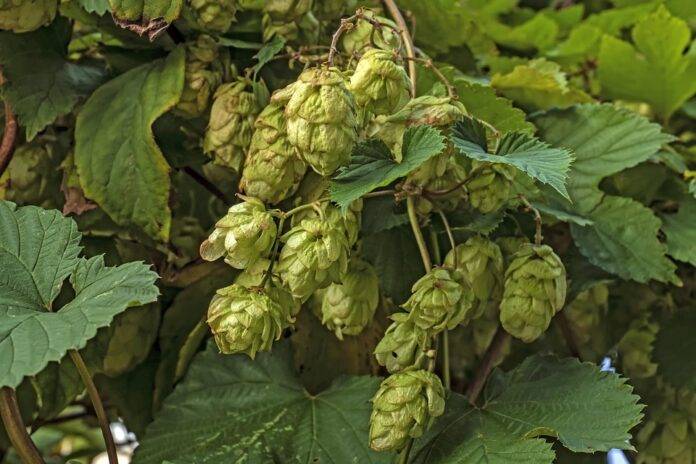Introduction
Craft beer has experienced a renaissance in recent years, with a growing number of breweries experimenting with different hop varieties to create unique and innovative flavor profiles. Hops play a crucial role in determining the taste and aroma of beer, and understanding how different hop varieties influence these characteristics is essential for brewers looking to create exceptional brews. In this report, we will explore how various hop varieties impact flavor profiles in modern beer, delving into the science behind hop selection and the trends shaping the craft beer industry.
The Role of Hops in Beer
Hops are one of the four primary ingredients in beer, along with water, malt, and yeast. They are the flowers of the hop plant (Humulus lupulus) and are primarily used for their bittering, flavoring, and aromatic properties. Hops contain essential oils and acids that contribute to the overall taste and aroma of beer, balancing out the sweetness of the malt and adding complexity to the brew.
Bittering
One of the key roles of hops in beer is to provide bitterness, balancing out the sweetness of the malt. This bitterness comes from compounds called alpha acids, which are extracted from the hops during the brewing process. Different hop varieties have varying levels of alpha acids, with some being more bitter than others. Brewers can adjust the bitterness of their beer by selecting hops with the desired alpha acid content.
Flavoring
In addition to bitterness, hops also contribute to the overall flavor profile of beer. Hops contain essential oils that give beer its distinctive taste, with flavors ranging from citrus and pine to floral and spicy. The specific flavor characteristics of a beer are influenced by the hop variety used, as well as how and when the hops are added during the brewing process. Some hops are known for their fruity flavors, while others impart earthy or herbal notes to the beer.
Aroma
The aroma of beer is another important aspect influenced by hops. Hops contain volatile compounds that give beer its signature smell, with aromas ranging from tropical fruits to grassy and resinous notes. Like flavor, the aroma of a beer is determined by the hop variety used and the timing of hop additions during brewing. Some hops are prized for their intense aromas, which can elevate a beer’s sensory experience.
How Different Hop Varieties Influence Flavor Profiles
There are hundreds of different hop varieties grown around the world, each with its own unique characteristics that can impact the flavor profile of beer. Some popular hop varieties include Cascade, Citra, Amarillo, and Simcoe, each known for their distinct flavors and aromas.
Cascade
Cascade hops are one of the most popular hop varieties used in craft brewing, known for their floral and citrusy aroma. They impart a grapefruit-like flavor to beer, with hints of pine and spice. Cascade hops are often used in American Pale Ales and IPAs, adding a bright and refreshing quality to the beer.
Citra
Citra hops are prized for their intense tropical fruit aromas, with flavors of citrus, mango, and passionfruit. They are commonly used in hazy IPAs and other hop-forward styles, adding a juicy and aromatic character to the beer. Citra hops have become a favorite among brewers looking to create bold and flavorful brews.
Amarillo
Amarillo hops are known for their floral and orange-like aroma, with flavors of tangerine and stone fruit. They are often used in pale ales and IPAs, providing a sweet and citrusy profile to the beer. Amarillo hops can add a refreshing and complex dimension to a brew, making them a popular choice for many brewers.
Simcoe
Simcoe hops are characterized by their piney and earthy aroma, with flavors of grapefruit and resin. They are commonly used in West Coast IPAs and other hop-forward styles, adding a bold and bitter quality to the beer. Simcoe hops can lend a robust and dank character to a brew, appealing to those who enjoy a more aggressive hop profile.
Industry Insights and Trends
The craft beer industry continues to grow and evolve, with brewers constantly pushing the boundaries of flavor and experimentation. Hop varieties play a crucial role in this innovation, with brewers seeking out new and exciting hops to create unique and memorable brews.
Financial Data
According to a report by the Brewers Association, the craft beer market in the United States generated $29.3 billion in retail sales in 2020, despite challenges posed by the COVID-19 pandemic. This demonstrates the resilience and popularity of craft beer among consumers, who are increasingly drawn to the diverse and flavorful offerings of small and independent breweries.
Trends
One notable trend in the craft beer industry is the rise of hazy IPAs, which are known for their juicy and aromatic hop profiles. Brewers are experimenting with new hop varieties to create hazy IPAs with unique flavor combinations, appealing to consumers looking for bold and flavorful brews. Another trend is the use of experimental hops, which are bred to have novel and distinctive aroma and flavor characteristics. Brewers are embracing these new hop varieties to differentiate their beers in a crowded market and capture the attention of discerning beer drinkers.
Conclusion
In conclusion, the flavor profile of modern beer is heavily influenced by the selection of hop varieties used in the brewing process. Different hop varieties contribute unique flavors and aromas to beer, allowing brewers to create a wide range of styles and expressions. Understanding how different hop varieties impact flavor profiles is essential for brewers looking to create exceptional and memorable brews that stand out in a competitive market. As the craft beer industry continues to thrive, we can expect to see even more innovation and creativity in hop selection and flavor experimentation, driving the evolution of beer culture and consumer preferences.



